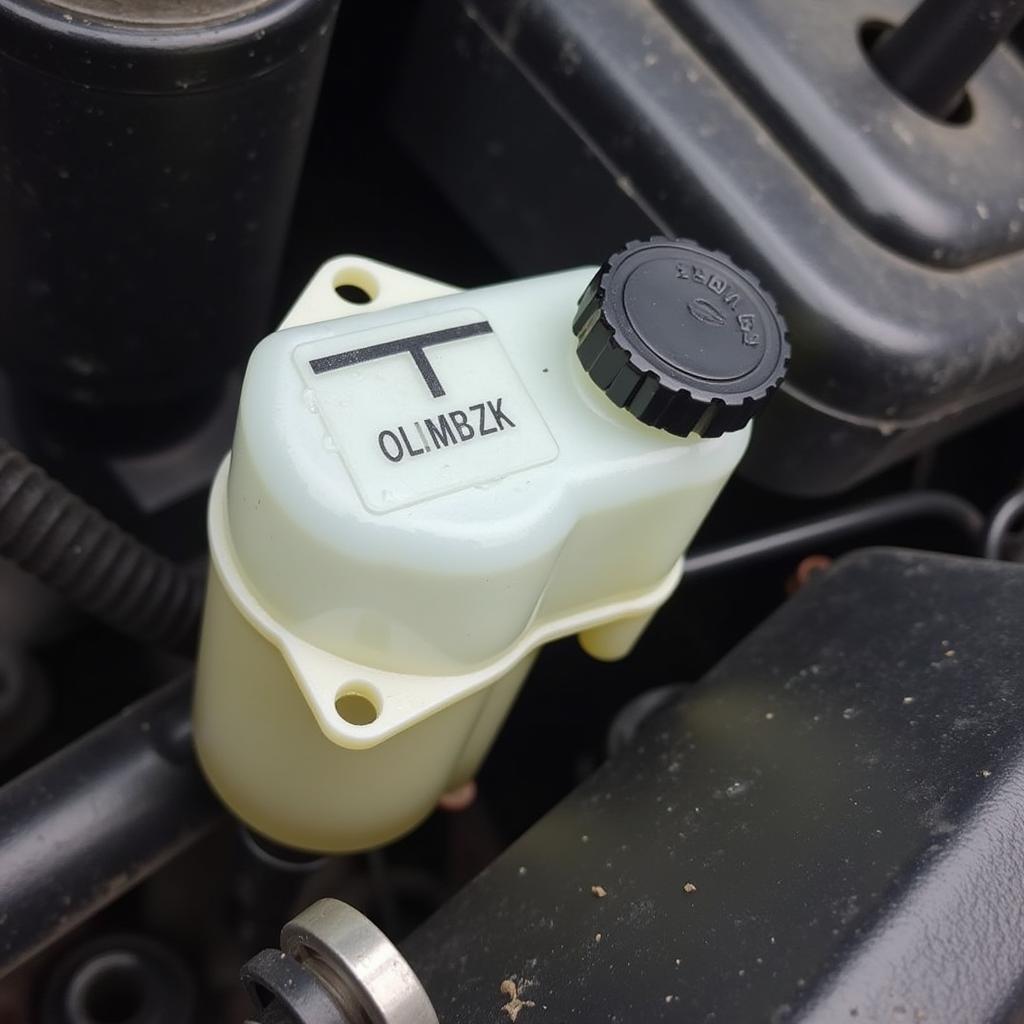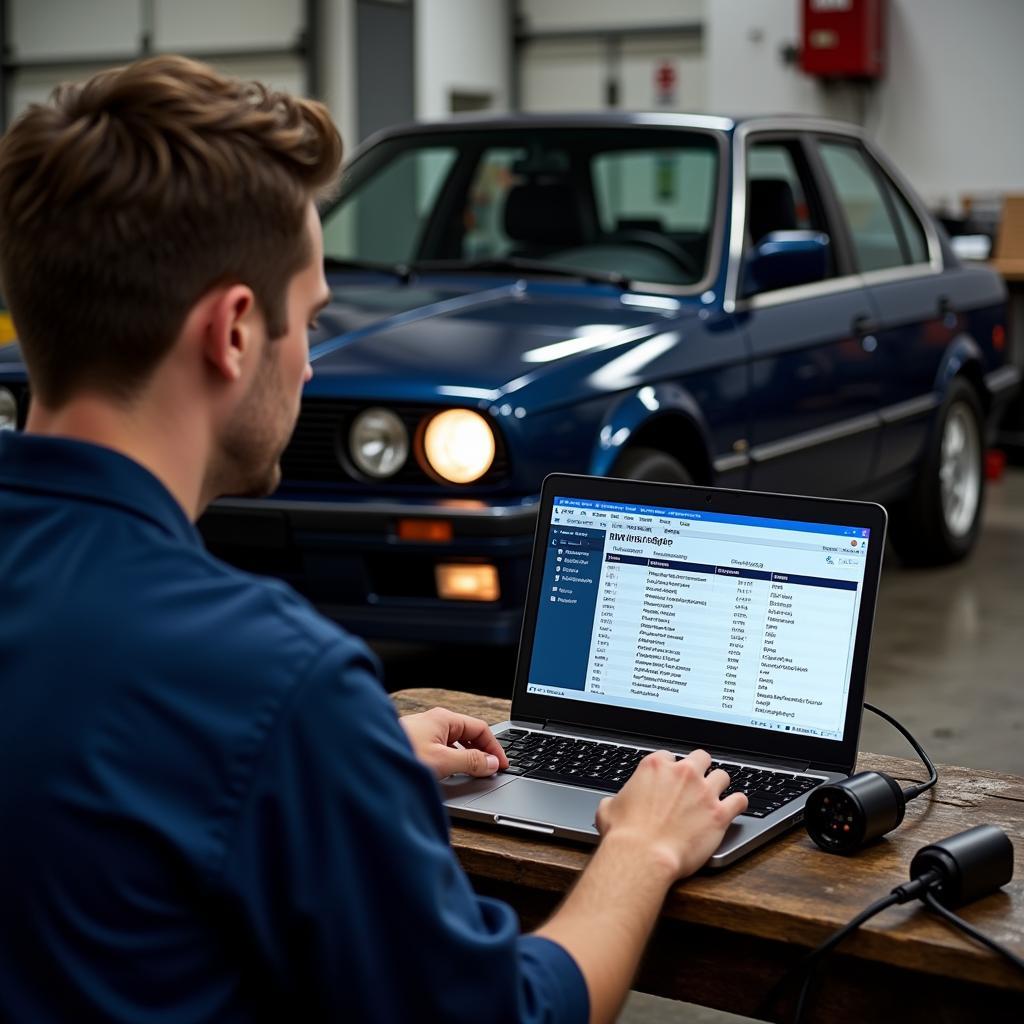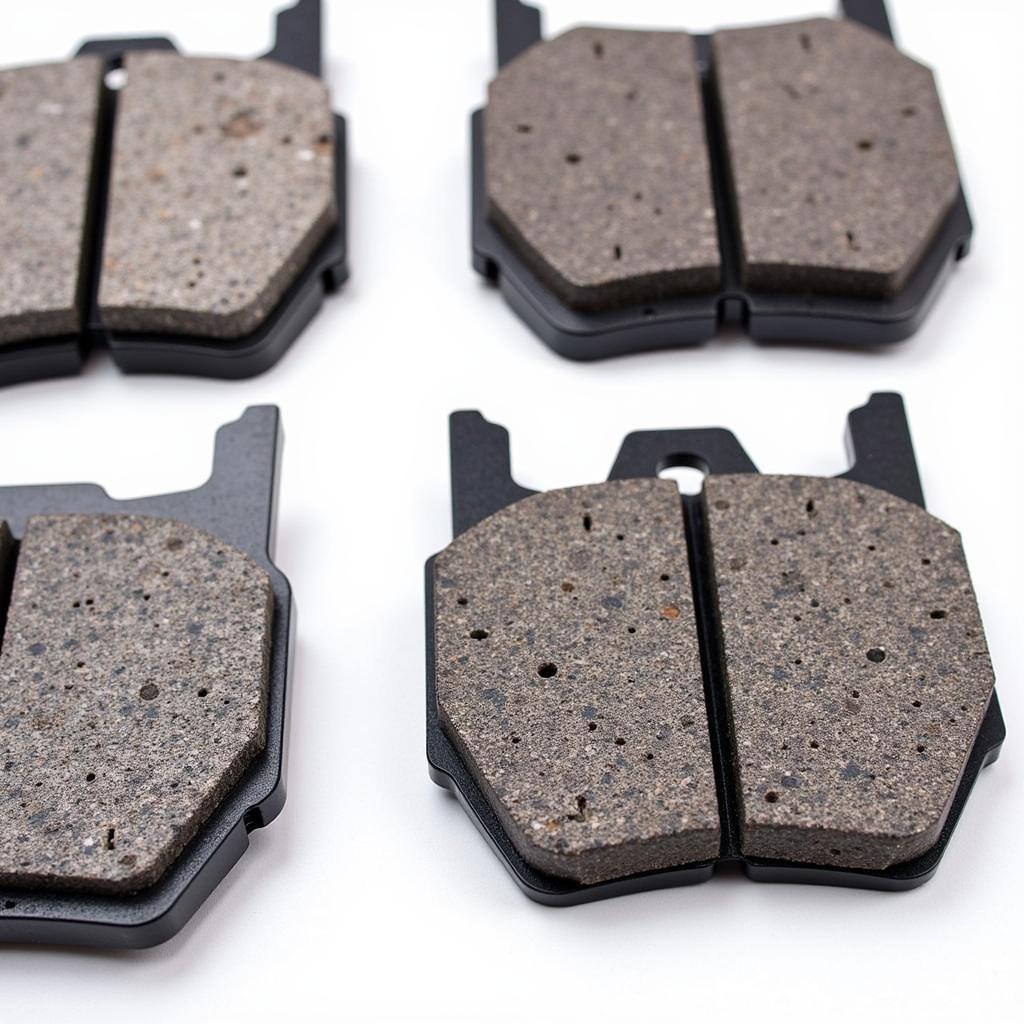A brake warning light illuminating on your dashboard can be a jarring experience, especially in a classic car like the 1990 BMW 325i. This light often signals a potential problem within the braking system that shouldn’t be ignored. Identifying the root cause is the first step to ensuring your safety and keeping your 325i running smoothly. This comprehensive guide explores the common reasons behind the brake warning light in a 1990 BMW 325i and provides insights on how to troubleshoot the issue.
Common Causes of a 1990 BMW 325i Brake Warning Light
There are several reasons why your 1990 BMW 325i’s brake warning light might turn on. Some of the most common culprits include:
1. Low Brake Fluid Level
One of the most common reasons for the brake warning light to illuminate is low brake fluid. Brake fluid is essential for transmitting the force you apply to the brake pedal to the brake calipers, ultimately stopping your car.
How to Check:
- Locate the brake fluid reservoir under the hood. It’s typically a translucent plastic container with a black cap.
- Check the fluid level. There are minimum and maximum markings on the reservoir. If the fluid level is below the minimum, it needs to be topped up.
 1990 BMW 325i Low Brake Fluid
1990 BMW 325i Low Brake Fluid
2. Worn Brake Pads
Brake pads are designed to wear down over time as you use your brakes. When they become too thin, a sensor within the brake pad system will trigger the warning light on your dashboard.
How to Check:
- Visually inspect your brake pads through the spaces between the wheel spokes.
- Look for a significant difference in thickness between the brake pad and the surrounding metal.
- If the brake pad appears to be very thin or you see metal scraping against the rotor, it’s time for a replacement.
 Worn vs. New Brake Pads
Worn vs. New Brake Pads
3. Brake Fluid Leak
A brake fluid leak is a serious safety concern. If the brake system doesn’t have enough fluid, your brakes won’t function correctly.
How to Check:
- Look for signs of fluid leakage around the wheels, near the brake lines, and under the vehicle.
- Brake fluid is typically clear or slightly yellowish and has a slightly oily texture.
- If you suspect a leak, it’s vital to have your vehicle towed to a mechanic immediately.
4. Faulty Brake Sensors
Like any other electrical component, the sensors in your braking system can malfunction. A faulty sensor might send a false signal to the dashboard, even if there’s nothing wrong with the actual braking components.
How to Check:
Checking for a faulty sensor often requires specialized tools and knowledge. It’s best to consult a qualified mechanic for a proper diagnosis.
What to Do When Your Brake Warning Light Comes On
If your brake warning light illuminates while driving, it’s crucial to:
- Remain calm.
- Pull over safely to the side of the road.
- Turn on your hazard lights.
- Assess the situation. Check your brake fluid level. If it’s low and you feel comfortable doing so, you can add more brake fluid to get to a mechanic. However, if the fluid level is extremely low or you see signs of a leak, do not attempt to drive the vehicle.
- Call for roadside assistance. If you’re unable to identify the problem or feel uncomfortable addressing it yourself, call a qualified mechanic or towing service.
Remote Diagnostics and Software Solutions for Brake Issues
In some cases, the brake warning light on your 1990 BMW 325i might be triggered by a software glitch or a minor electrical issue. This is where remote diagnostics and software solutions come into play.
By connecting your vehicle to a specialized diagnostic tool, certified technicians can remotely access your 325i’s onboard computer, read fault codes, and identify the root cause of the problem. In certain situations, they might even be able to resolve the issue remotely by reprogramming or updating your car’s software.
 Remote Diagnostics on a BMW
Remote Diagnostics on a BMW
“Remote diagnostics and programming offer a convenient and efficient way to address certain brake warning light issues,” says Jake Turner, Senior Automotive Technician at Bavarian Autohaus. “However, it’s essential to remember that not all problems can be solved remotely. Issues like low brake fluid, worn brake pads, or leaks require hands-on inspection and repair.”
Conclusion
The brake warning light in your 1990 BMW 325i should never be ignored. It’s a critical safety feature that alerts you to potential problems within your braking system. By understanding the common causes and taking the appropriate steps, you can ensure your safety and keep your classic BMW running smoothly. Remember, if you’re ever unsure about how to address a brake issue, it’s always best to err on the side of caution and consult a qualified mechanic.

